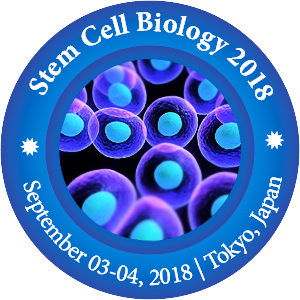
Suman Chandra Nath
University of Calgary Calgary, Alberta, Canada
Title: Bioprocess Development for High-Density Culture of Human Induced Pluripotent Stem Cells in Bioreactor
Biography
Biography: Suman Chandra Nath
Abstract
Large numbers of human induced pluripotent stem cells (hiPSCs) are required for making stable cell bank for clinical applications. Although suspension culture yields large cell numbers, there are still unresolved challenges for the expansion of hiPSCs because large size aggregates show low growth rate during long-term culture. In this study, we have investigated the size- and time-dependent growth properties of hiPSCs aggregates, and set up a boundary condition to maintain high growth rate in suspension culture. We have also established a simple method for hiPSC aggregate break–up into small sizes by using botulinum hemagglutinin (HA). hiPSCs showed size–dependent growth heterogeneity, and aggregates ranging from 100-200 µm showed high growth rate during early-stage of culture (24–72 h). hiPSCs proliferation was also dependent on culture time because the growth rate decreased significantly during late-stage of culture (72–120 h) at which point collagen type I accumulated on the periphery of aggregate. Therefore, to maintain high growth rate, controlling aggregate size, and shortening culture time is important. To obtain high cell density in suspension culture, hiPSC aggregates were exposed to HA, and broken into small sizes by pipetting. A maximum cell density of (4.5 ± 0.2) × 10^6 cells/mL was obtained by aggregate break–up into small ones, which was 3 times higher than that by the conventional culture without aggregate break–up. This method allowed high-density culture of hiPSCs by breaking-up aggregates into small sizes without the need for enzymatic treatment or centrifugation in suspension culture. Therefore, considering the boundary conditions for aggregate size and culture time is important to obtain high growth rate, as well as high cell density in stirred suspension bioreactor culture.

